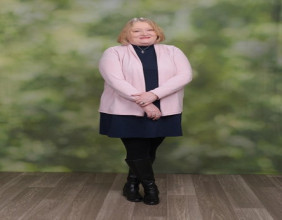Summary
- UK GDP shrank by 20.4 per cent during April to June 2020, and by 2.2 per cent during January to March 2020
- Only the pharmaceuticals category (amongst manufacturing segment) grew positively during Q1 and Q2 2020, as per government data
- Public administration and defence grew at a positive rate, amongst services
- Real estate demand is also running high, as per market experts
The UK economy has officially entered recession by contracting consecutively for the second quarter in a row during Q2 2020. The 20.4 per cent drop for the quarter was a sharp one, and encompassed almost all the sectors of the economy, according to latest ONS (Office for National Statistics) data.
The silver lining is that the June 2020 data is (the month that saw easing of lockdown restrictions) shows pick up the growth of economic output. Hopefully, it will be sustained in the months going forward.
GDP (gross domestic product) quarterly estimates for the UK

(Source: Office for National Statistics, UK Government)
As can be seen from the above chart, the economic output has been severely impacted across all the three major segments of the economy, namely the services, production, and construction. Construction has been particularly badly hit, its output dropped by minus 35 per cent during Q2 2020, as compared to the same period the previous year. The drop was higher in the second quarter as compared to the first one, for all the three sectors.
GDP quarterly estimates for the UK: manufacturing sub-sectors

(Source: Office for National Statistics, UK Government)
Looking at the manufacturing sub-sector-wise distribution of the quarterly GDP numbers, one can see from the above chart that all the manufacturing sectors except the ‘basic pharmaceutical products and pharmaceutical preparations’ have seen a fall in production (grew by 0.76 per cent during Q2 2020 and by 0.93 per cent during Q1 2020).
Apparently, the latest quarterly UK International Trade Index released by the Lloyds Bank also revealed that the pharma and healthcare sector had shown good growth after the coronavirus struck the nation in February 2020. Many pharma companies’ Q1 2020 results confirmed the same. The growth has continued during the second quarter of the year as well, according to the report.
The manufacturing sub-categories that witnessed major contraction during the second quarter of 2020 were transport equipment (-6.38 per cent), basic metals and metal products (-2.37 per cent), rubber and plastic products (-2.01 per cent), food products, beverages, and tobacco (-1.59 per cent), and wood, paper products and printing (-1.41 per cent), according to ONS statistics.
Another sub-sector that grew marginally was ‘public administration and defence’ (0.4 per cent) during Q2 2020. It forms a part of the services sector. Britain’s reliance on services, particularly the consumer services that need a face to face interaction, has been a main cause for the contraction in the output.
The length of the lockdown was also a probable factor. Since the restrictions were placed a little late, they were also more stringent than many other western European countries, who were quicker to react.
Some services like hospitality and tourism have only opened since 4 July 2020 across Britain, so their growth numbers beginning July need to be awaited.
The UK GDP dropped more severely in H1 2020 (by 22.1 per cent), almost double than that of US’s GDP for the same period (-10.6 per cent).
As a comparison, Germany’s GDP fell by 11.9 per cent during the first half of 2020. The corresponding figure for Italy was -17.1 per cent, for France it was -18.9 per cent, and for Spain it was -22.7 per cent.
Real estate demand is booming too
On the side lines, the market estimates suggest that despite recessionary times, demand is going high for real estate in the nation. Sellers are controlling the market since the supply is low.
One of the reasons for this pickup is the government’s limited period stamp duty waiver. Rishi Sunak, Chancellor, UK Treasury had raised the stamp duty threshold from £125,000 to £500,000 from 8 July 2020 until 31 March 2021. Real estate agents have estimated that the number of home buyer applications with them for a budget between £500,000 and £750,000 has risen by almost 90, as compared to last year.
Employment data is worrisome
The latest government statistics have estimated that during the second quarter of 2020, the total number of employed people across the country dropped by 220,000, the largest quarterly drop since 2009, which had happened due to the global financial crisis.
PM Johnson has said that Britain has a long way to go before the economy shows steady improvement, given the uncertain times ahead. At the same time there is no doubt that some parts of the economy are showing great resilience, he added.
The silver lining of June GDP numbers
The economic output in Britain grew by 8.7 per cent during June 2020, providing a ray of hope for this growth to be sustained and get even higher in the coming months to follow. Despite this, the overall level of output has not come back to the pre-corona level seen during February 2020 and is short by 17.2 per cent.
Lockdown had started to open-up across many sectors beginning 1 June 2020.
The monthly GDP had grown by a lesser amount of 2.4 per cent during May 2020.
According to media reports, Rishi Sunak might postpone the autumn budget in case a second wave of coronavirus infections hits the nation in the coming months. In that case, the autumn budget shall be postponed until spring 2021 and Sunak will present a mini-spending review during autumn instead.
To sum up, the UK economy went into a recession, and the gross domestic product contracted by 20.4 per cent for the second quarter of 2020. While the output for most of the sectors shrank, some sub-sectors like pharmaceuticals and public administration & defence showed resilience during the period. Real estate demand is also up, as per market experts. However, there is a silver lining in the June 2020 GDP numbers which show a monthly growth of 8.7 per cent over the same month in 2019. Hopefully, the growth data for the coming months will be even more positive and the country’s economy will bounce back soon.





